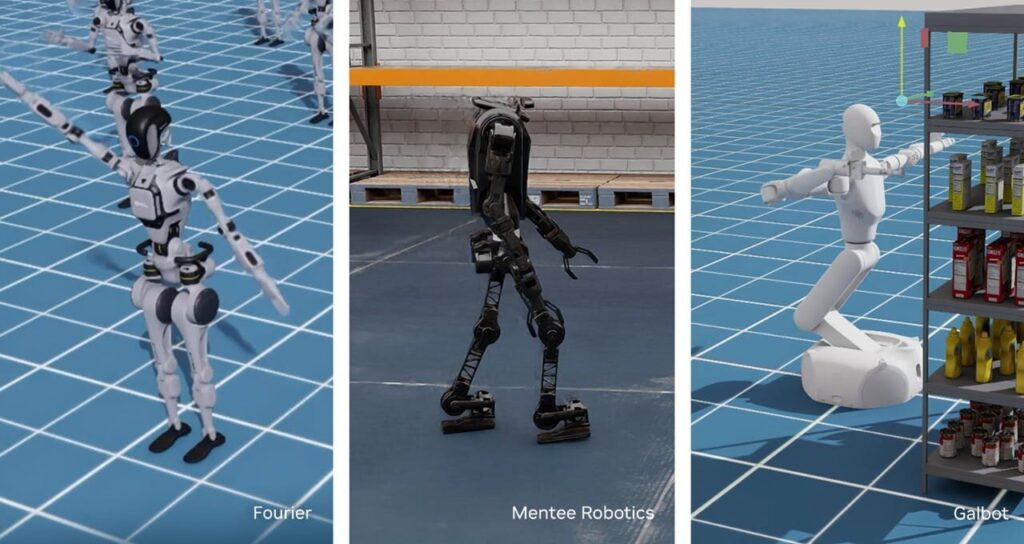The world of robotics continues to captivate with its relentless innovation, driving us closer to a future where advanced machine intelligence becomes a reality. This week, several remarkable developments have made waves, showcasing the ever-evolving capabilities of robots and their applications.
Meta’s pioneering efforts in tactile technology have taken a significant step forward. Researchers at Meta FAIR have unveiled several groundbreaking projects aimed at elevating robotics to new heights of sophistication. Among these breakthroughs is Meta Sparsh, the first general-purpose encoder created for vision-based tactile sensing. This encoder is versatile enough to work with a variety of tactile sensors across multiple tasks. Additionally, Meta Digit 360, an artificial fingertip sensor, has been introduced, promising touch data of human-level precision. Complementing these innovations is Meta Digit Plexus, a platform streamlining robotic sensor interactions by enabling seamless data integration and control via a singular cable.
In another advance, Clone Inc. has introduced a revolutionary bimanual Torso which mirrors human anatomy with extraordinary detail. This humanoid marvel features a dynamically actuated elbow, an intricate cervical spine, and shoulders that replicate human joints. This level of anatomical fidelity allows for sophisticated bimanual manipulation training, a testament to the fusion of robotics and human-like functionality.
Meanwhile, at the forefront of autonomous robotics, Nadia—a creation backed by research from Florida’s Institute for Human and Machine Cognition—demonstrates a new benchmark for robot navigation. Equipped with a sophisticated neural network, Nadia can tackle a variety of doors autonomously, exhibiting resilience and adaptability in face of challenges. Whether it’s pull or push doors, spring-loaded closers, or complex opening mechanisms, Nadia handles them with ease, owing much of its prowess to an advanced door-plane estimator.
Not to be outdone, the CubiXMusashi project by JSK Robotics Laboratory, University of Tokyo, combines the musculoskeletal humanoid Musashi with the wire-driven CubiX robot. This fusion, known as CubiXMusashi, overcomes the limitations of traditional humanoids by enabling complex movements such as pull-ups and mid-air kicks—tasks previously unimaginable for Musashi alone.
Noteworthy design in robotics extends beyond humanoids to legged robots, as highlighted by Agility Robotics’ innovations in navigating challenging terrains, such as old boardwalks. Disney Research, too, offers cutting-edge solutions, presenting a novel learning-based control framework using keyframing and multi-critic reinforcement learning. This approach holds promise for more agile and predictive movements in legged robots, advancing their natural locomotion capabilities.
In the realm of drone technology, researchers from the University of Pennsylvania and the University of Zurich have developed an innovative method for static-obstacle avoidance in quadrotors using a monocular event camera. This breakthrough allows for high-speed, manual-style navigation in cluttered settings by leveraging event cameras’ superior motion detection capabilities.
Across the global stage, the 2024 Xi’an Marathon witnessed an intriguing spectacle as STAR1, Robot Era’s humanoid robot, participated alongside human runners, symbolizing the harmonious blend of ancient traditions and modern technology in this vibrant city.
Furthermore, in a testament to creative problem-solving and teamwork, the CyberKnights FIRST robotics team, supported by RTX sponsorship, overhauled their robotics strategy in just nine days, overcoming initial setbacks to achieve competitive success.
Finally, PAL Robotics recently celebrated its 20th anniversary with a gathering that united industry leaders and visionaries. This milestone event encapsulated decades of innovation and collaboration, reinforcing PAL’s contributions to shaping the future of robotics.
As we witness these robotic wonders unfolding, it’s clear that the intersection of human ingenuity and machine capability is accelerating towards a future where robots seamlessly integrate and enhance our world.


